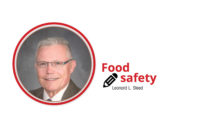Do you have your food defense plan in place? July 26, 2019 is the compliance deadline for the FDA’s final rule on Mitigation Strategies to Protect Food Against International Adulteration under the Food Safety Modernization Act (FSMA). This deadline is for companies with over $10 million in annual revenue and with more than 500 full-time equivalent employees. Small businesses will need to comply by July 26, 2020.
Managing the implementation team is vital to regulatory compliance success. Implementing change is always challenging, so a dedicated team is required. However, food manufacturing has recently seen an all-time high in employee turnover. The Center for Food Safety and Applied Nutrition estimates a turnover rate of 33 percent for FDA-regulated facilities. To ensure that personnel perform their jobs well, appropriate training and maintaining food defense records, corrective actions and verification activities must be evaluated. Food companies must efficiently and effectively train their team, provide guidance and on-site threat assessments to ensure they are keeping up with shifting regulatory demands.
To ensure your systems are working as intended, regular threat assessments should be planned and executed so that your food defense team is aware of your intentional adulteration risks and takes proactive actions to mitigate them.
Each facility and operation is different. A parent company may own five facilities, but each will have different risks and hazards based on location and plant setup alone.
The FDA has identified four Key Activity Types (KATs) that consistently rank as the most vulnerable to intentional adulteration regardless of the food commodity assessed. These KATs are:
- Bulk liquid receiving and loading
- Liquid storage and handling
- Secondary ingredient handling
- Mixing and similar activities
It’s important to review your facility’s status regarding changes that you have made to protect against intentional adulteration:
- Have you completed and documented a threat assessment on your processing steps?
- Is your operation secure from individuals you have welcomed into your facility?
- What critical areas, or actionable process steps, did you identify (mixing, blending, bulk storage)?
- Have you assessed them to make sure they’re secure?
- Who is the qualified individual that oversees the food defense plan?
Working with a proven food safety consultant will often provide much-needed clarity around requirements and help to establish controls suited to your unique threats.




